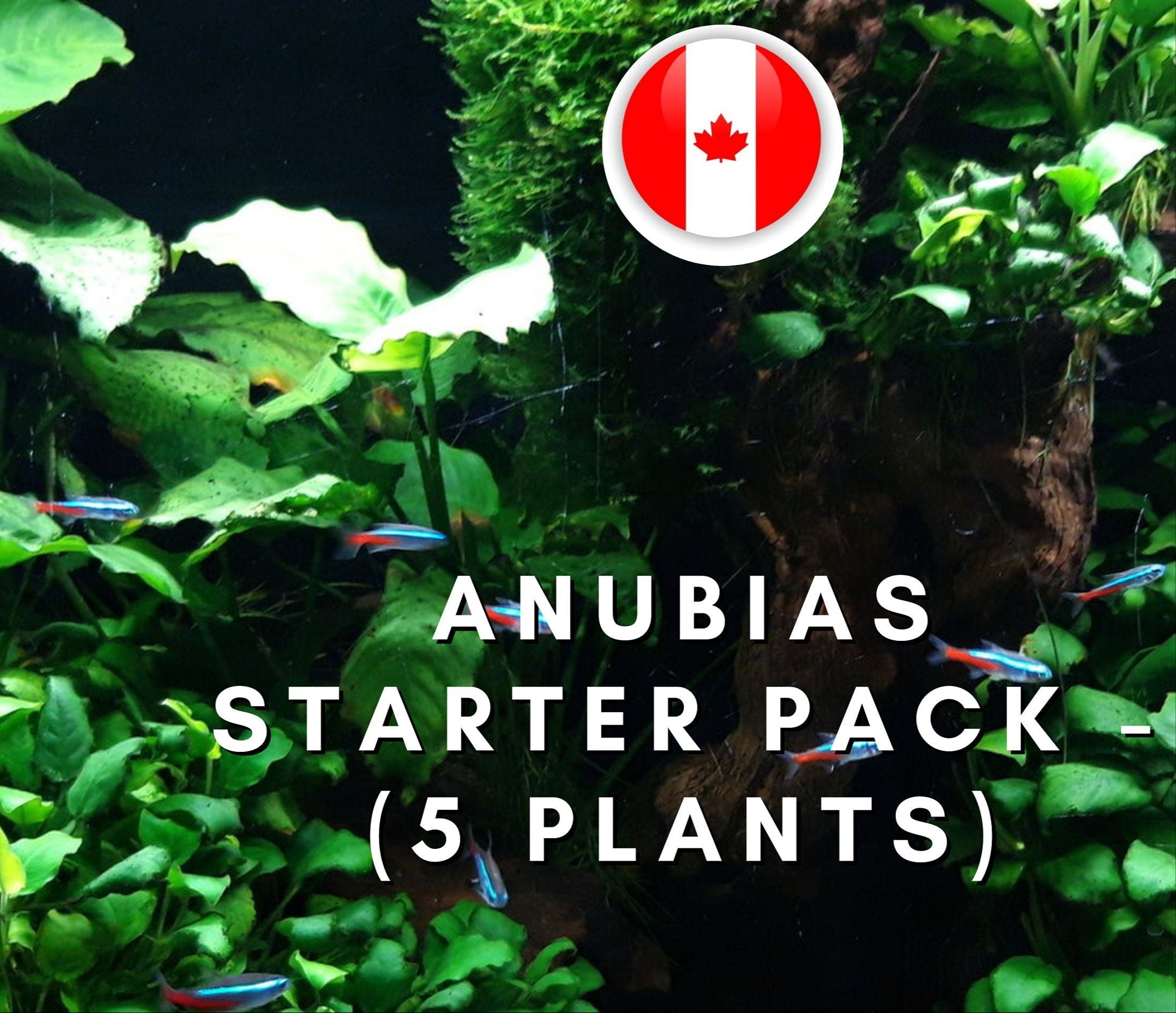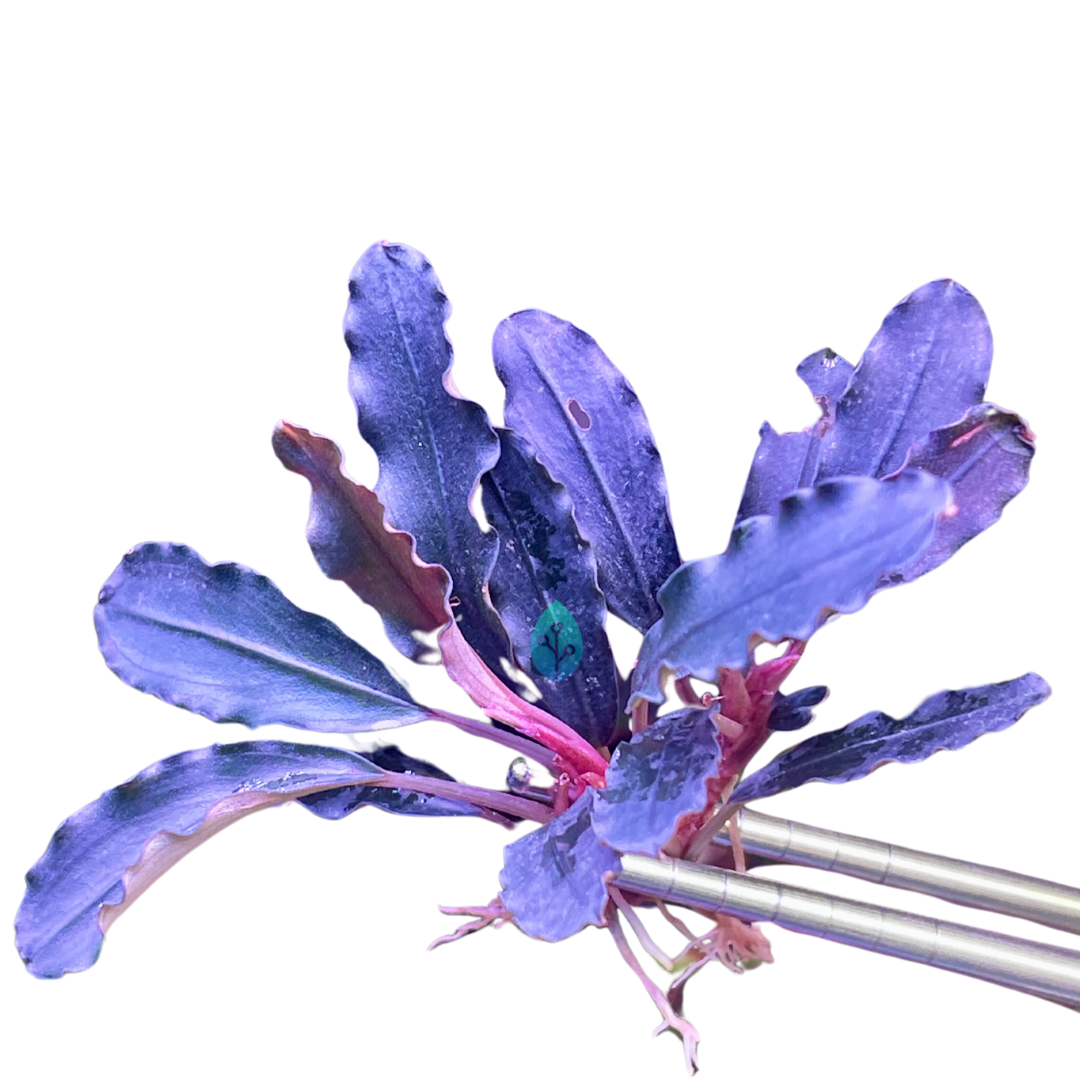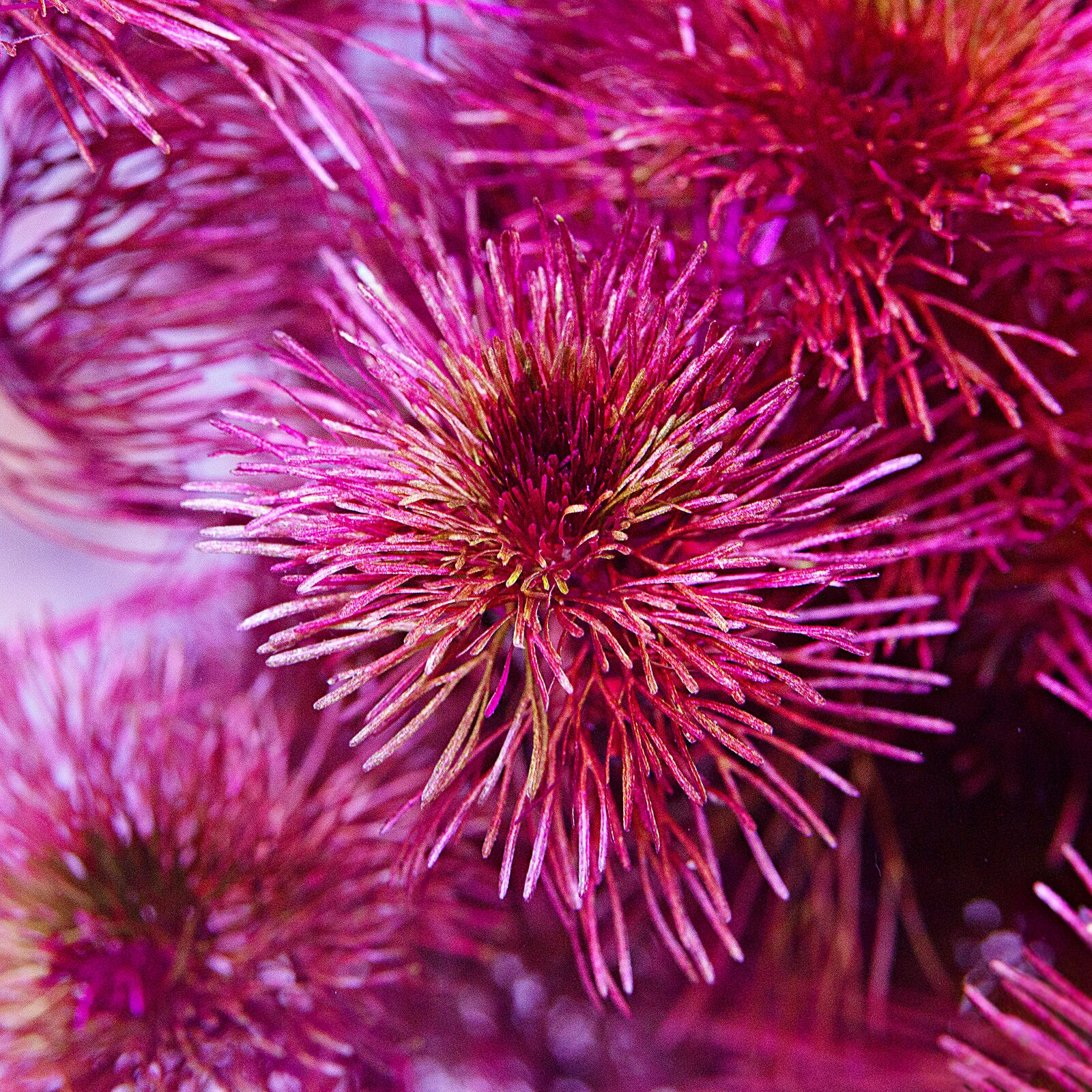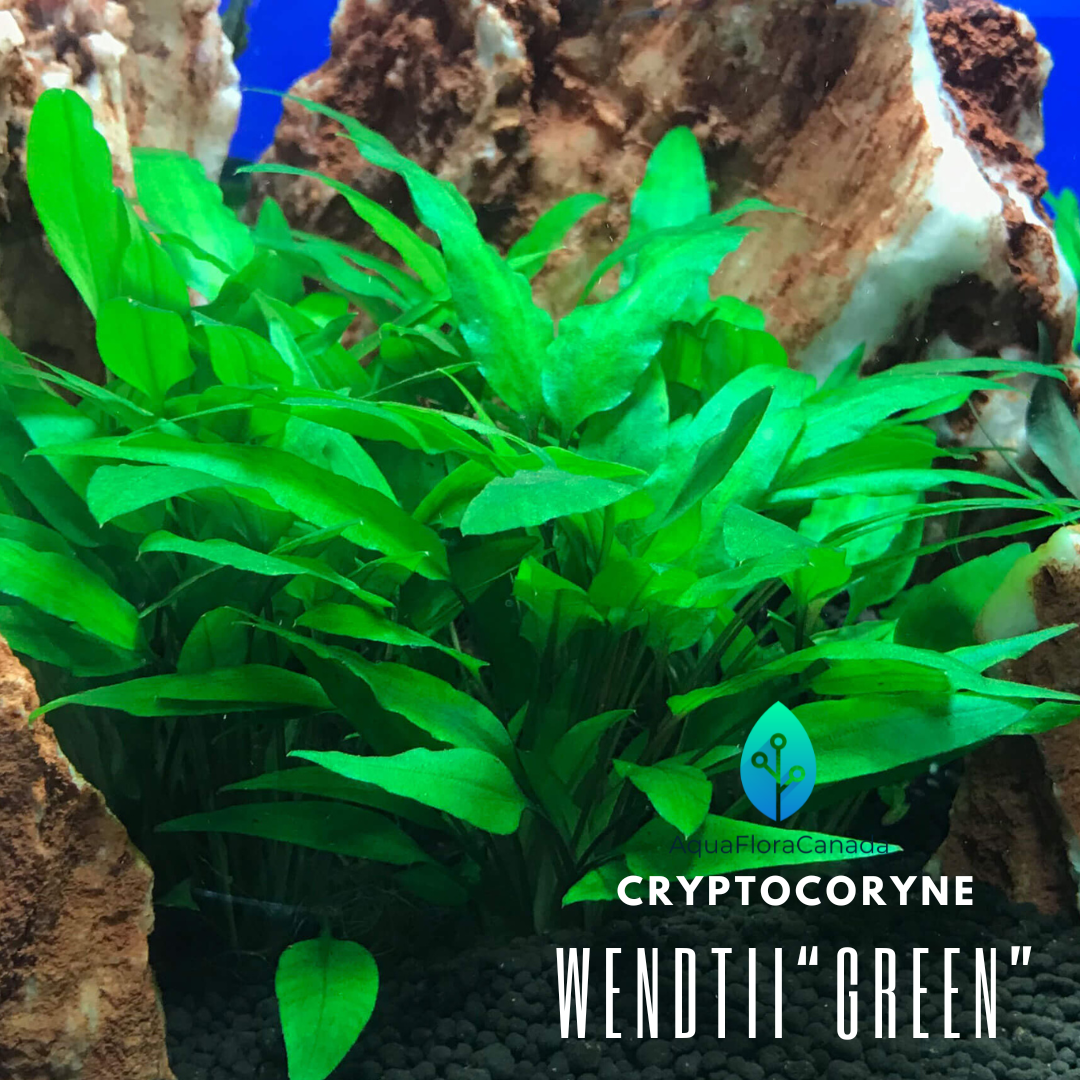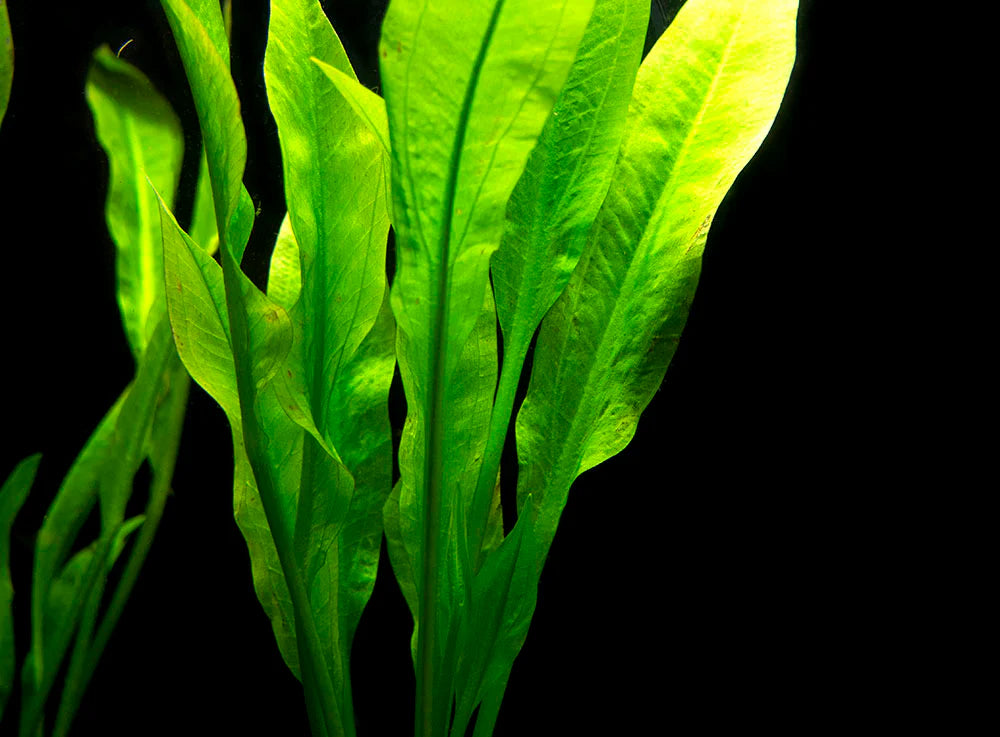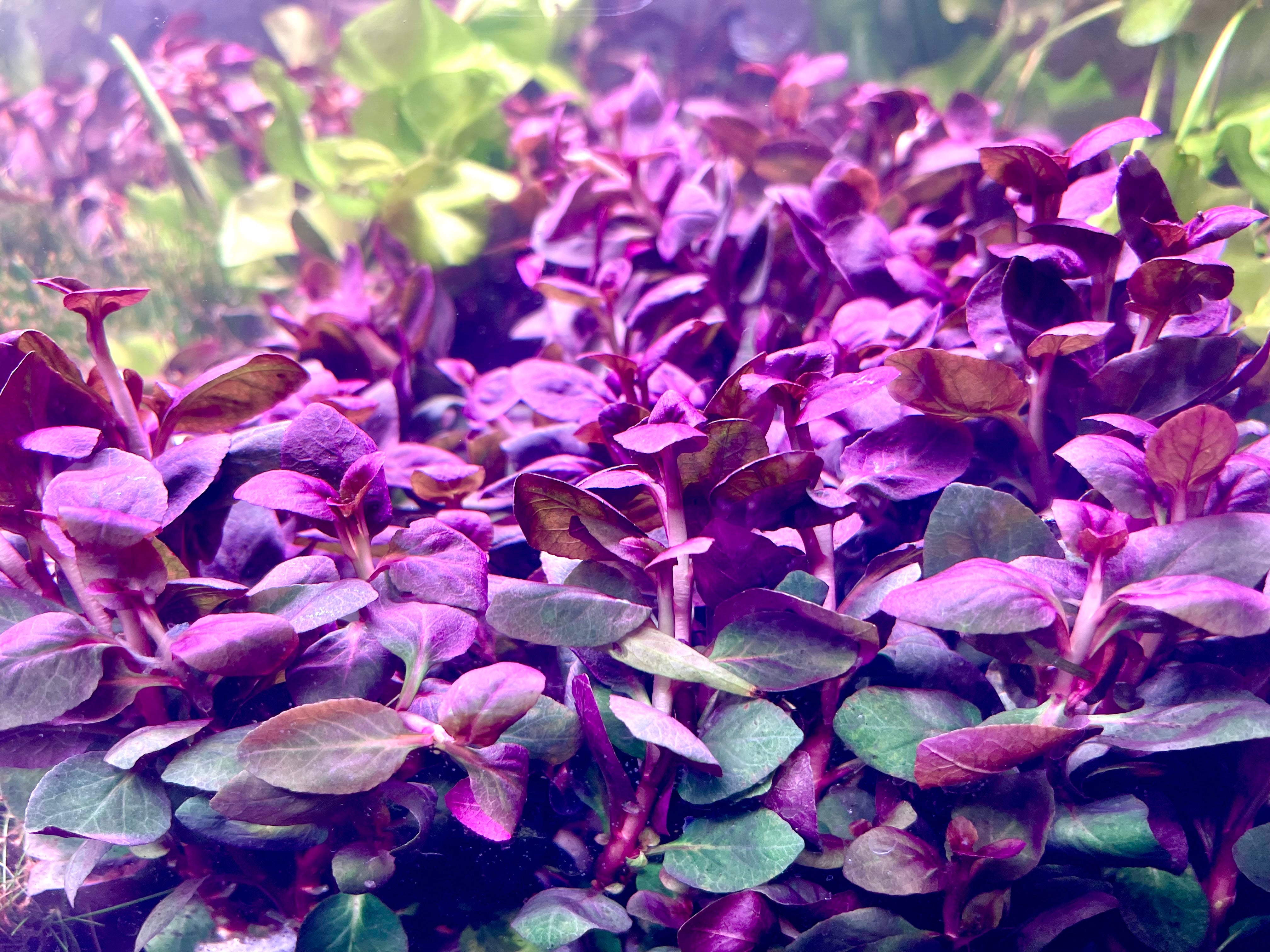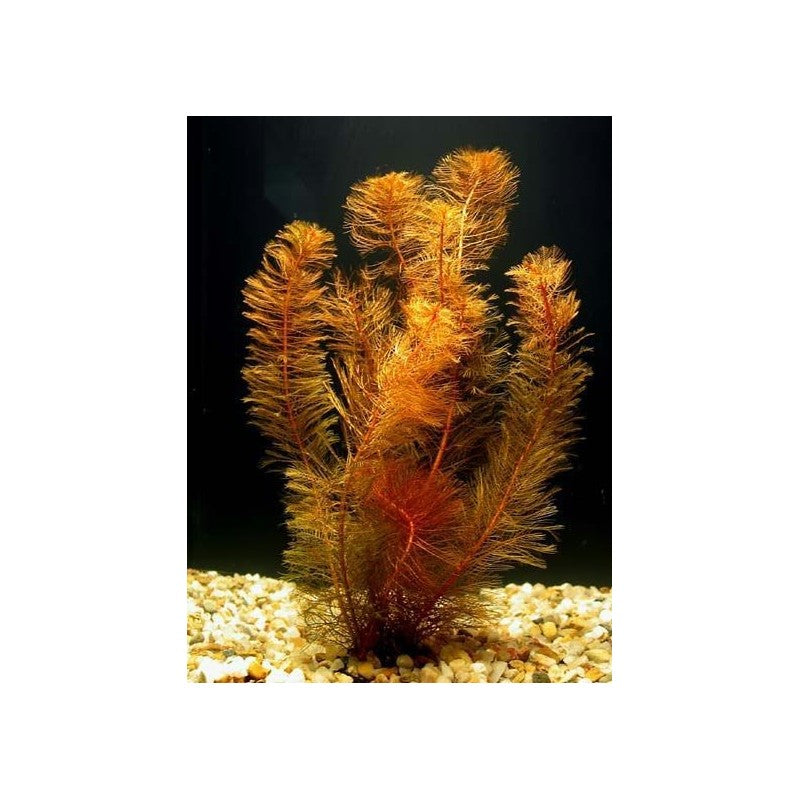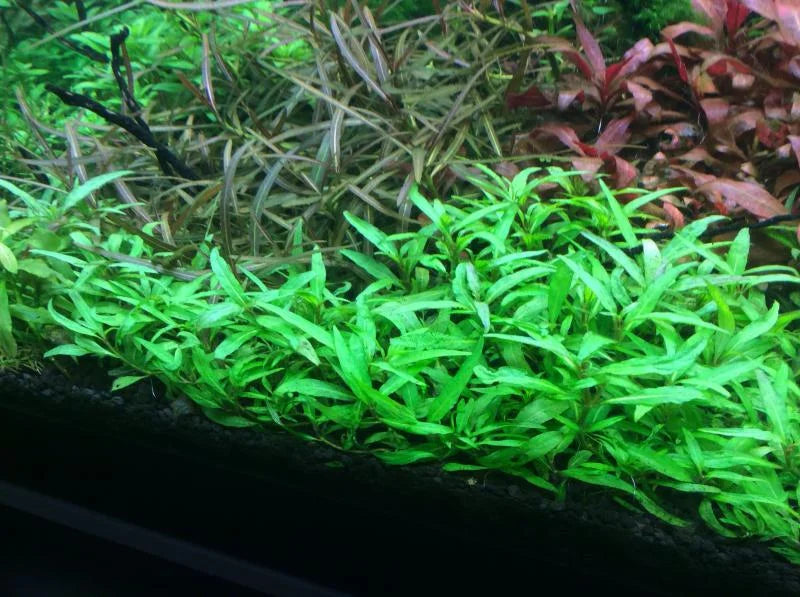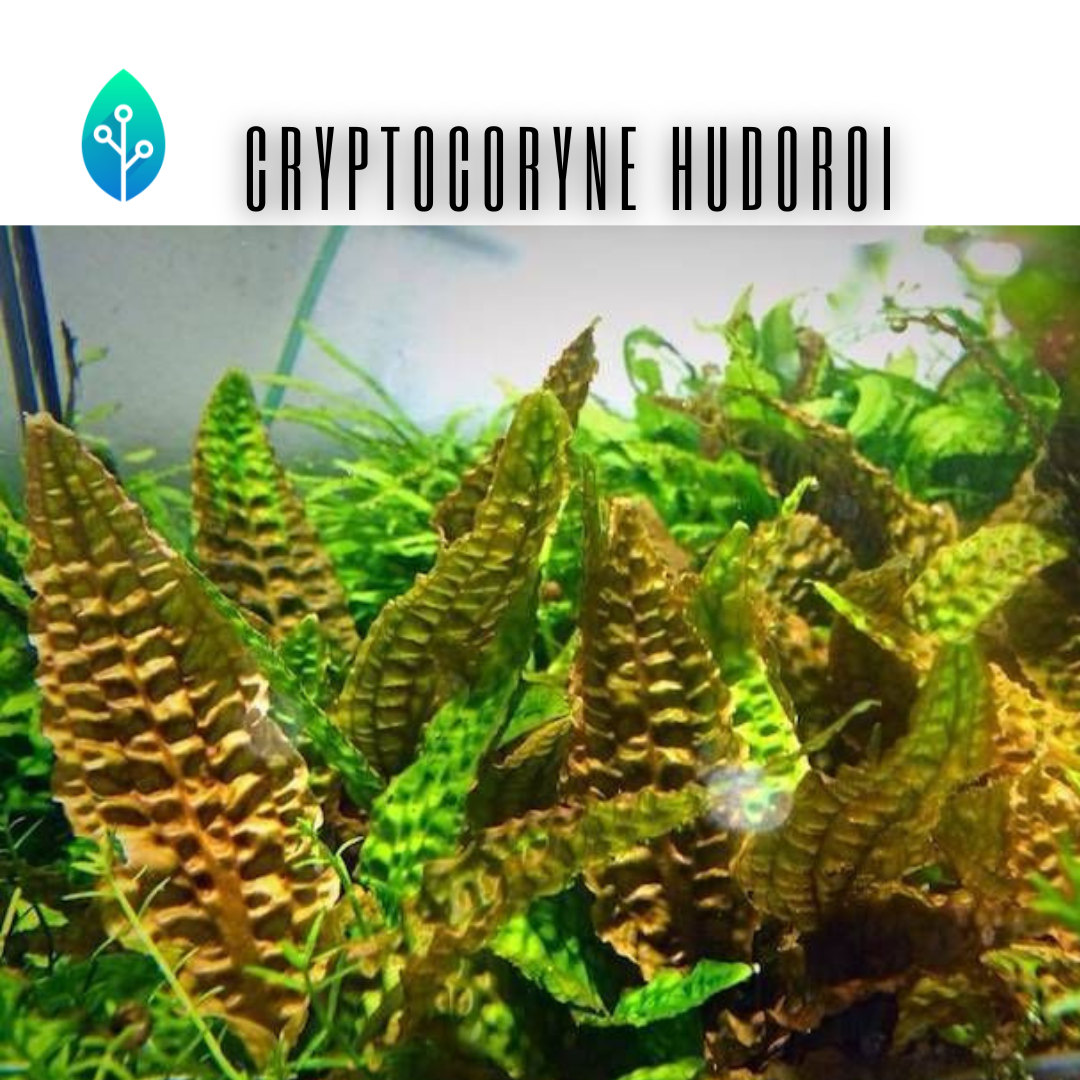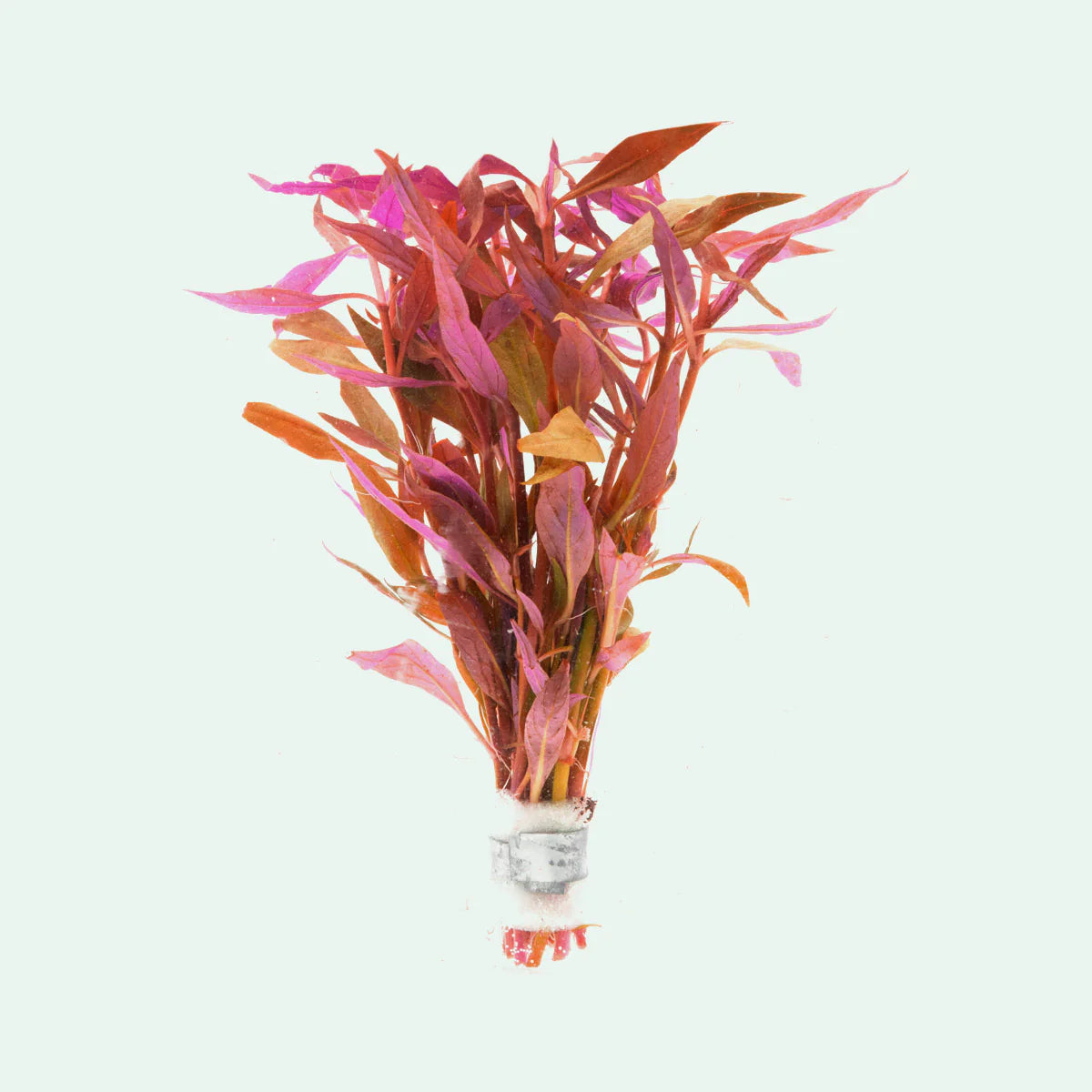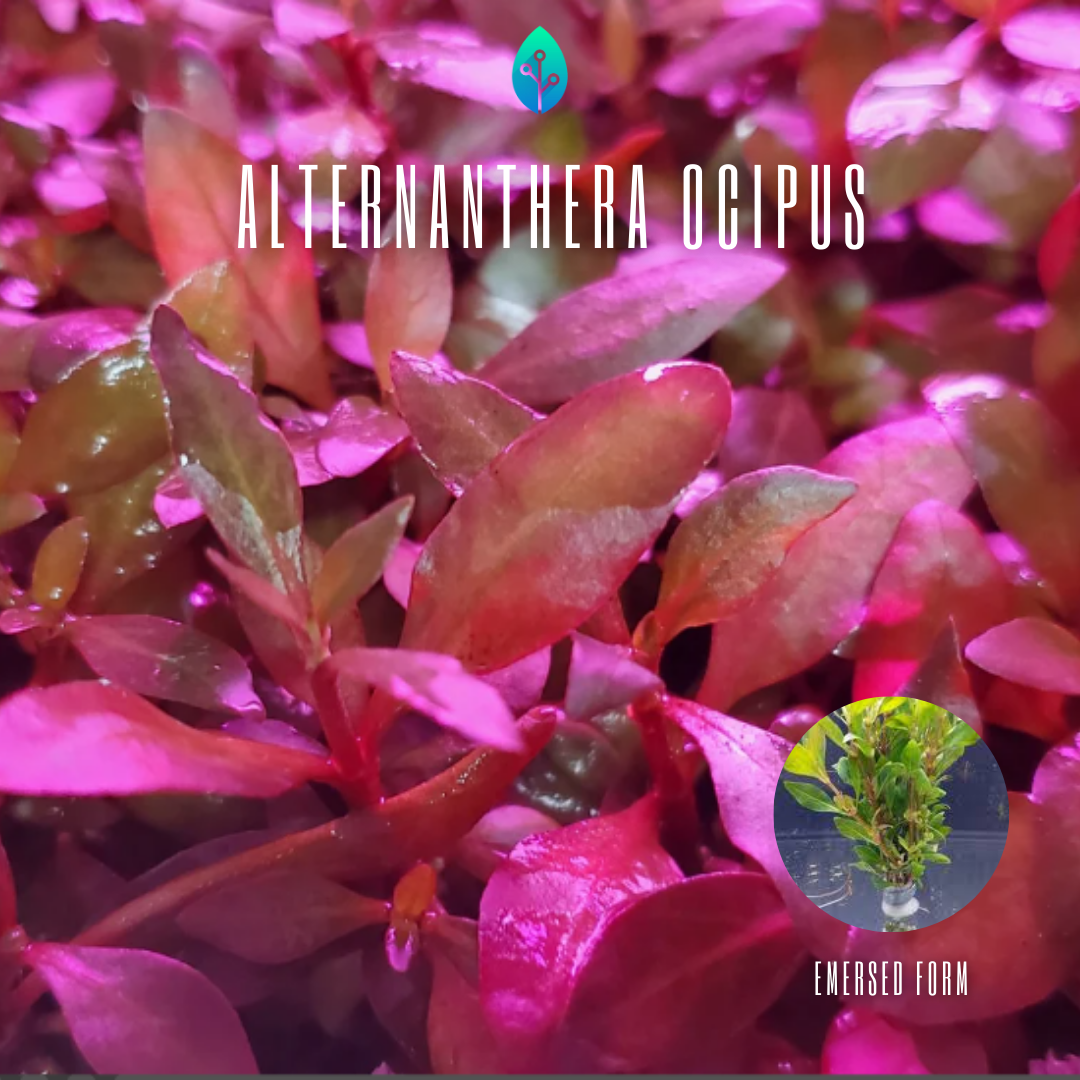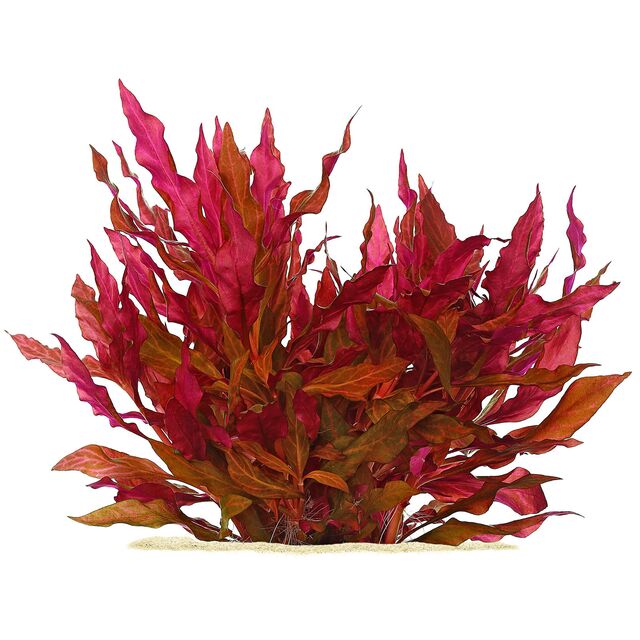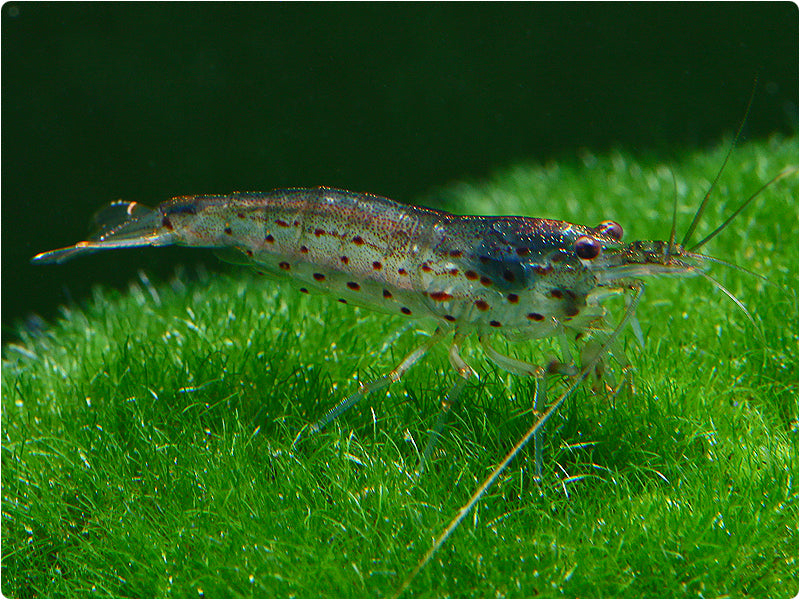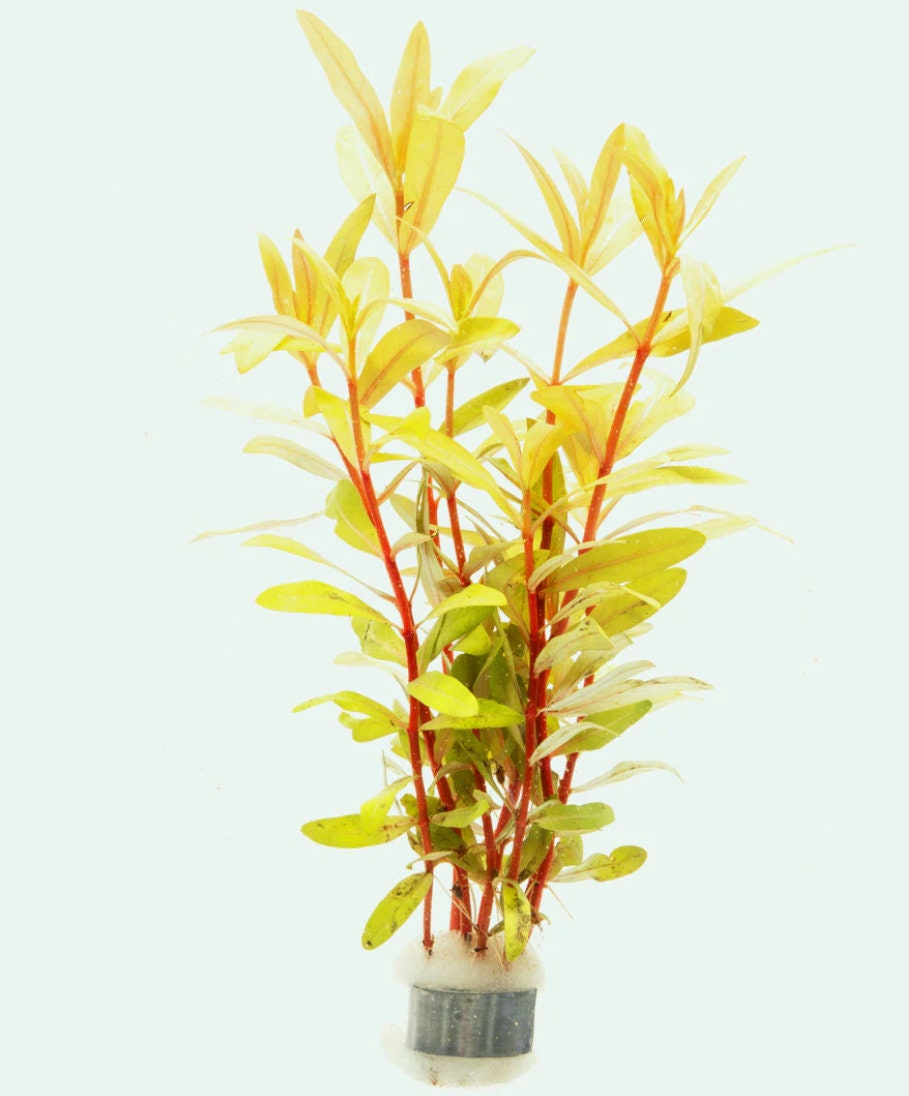Cryptocoryne hudoroi is a rare and unique species of aquatic plant from the Cryptocoryne genus, native to Borneo. This plant is highly sought after in the aquarium hobby due to its rarity and its distinctive appearance.
Key Features:
- Leaves: The plant has long, narrow, lance-shaped leaves with a textured surface and can vary in color from dark green to brownish hues, sometimes with subtle reddish undertones. The surface of the leaves often has a crinkled, hammered texture, adding to its visual appeal.
- Size: It can grow to about 10-20 cm (4-8 inches) in height, making it a great midground or foreground plant in aquascaping.
Care Requirements:
- Lighting: Cryptocoryne hudoroi does well in low to moderate light. It’s ideal for low-tech aquariums where it can thrive without intense lighting. However, stronger lighting can enhance its colors and growth.
- Substrate: Like many Cryptocoryne species, it prefers a nutrient-rich substrate, as it primarily absorbs nutrients through its roots. A fine-grained, nutrient-dense substrate is beneficial.
- CO₂ & Fertilization: It doesn't necessarily require CO₂ injection, but it can benefit from it in a more advanced planted tank setup. Regular dosing of liquid fertilizers with iron can help support healthy growth.
- Water Conditions: It prefers soft, slightly acidic to neutral water but can adapt to a wide range of water parameters. Consistent water conditions are crucial, as Cryptocoryne species are sensitive to sudden changes, which can cause "crypt melt," where the plant sheds its leaves but can recover over time.
Ideal Conditions:
- Temperature: 22–28°C (72–82°F)
- pH: 6.0–7.0
- Water Hardness: Soft to moderately hard
Placement in Aquariums:
Cryptocoryne hudoroi is often used in the midground or foreground in aquascaping designs due to its moderate height and distinctive leaf texture. It can be used to create natural, lush underwater landscapes when mixed with other Cryptocoryne species or slow-growing plants.
Overall, Cryptocoryne hudoroi is a rewarding plant for aquascaping enthusiasts, especially those who appreciate the natural beauty and slower growth of plants in low-tech setups.


